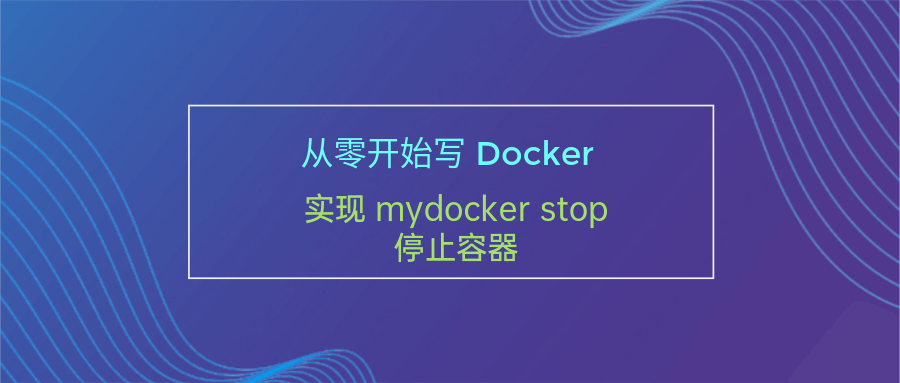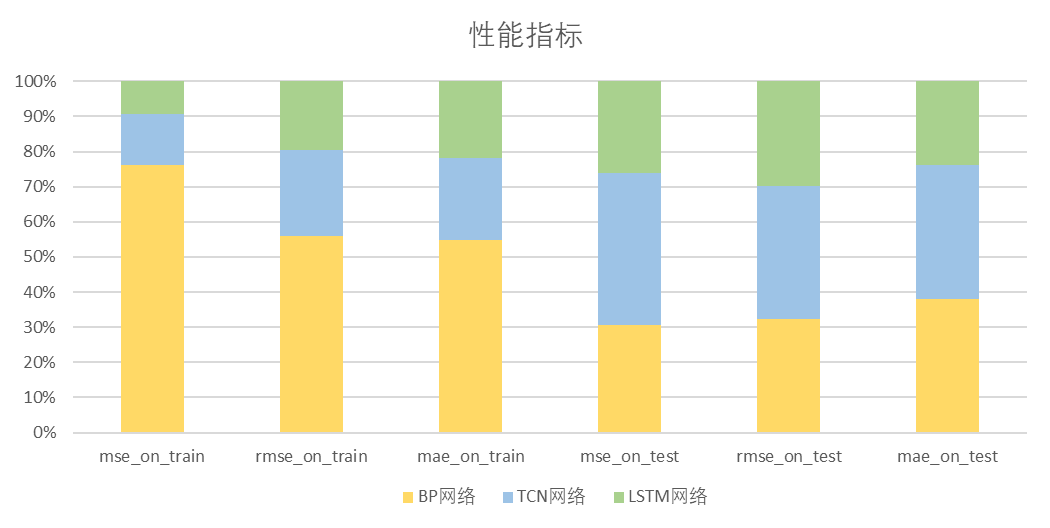从API route开始看StopContainer接口的调用过程。
// NewRouter initializes a new container router
func NewRouter(b Backend, decoder httputils.ContainerDecoder) router.Router {
r := &containerRouter{
backend: b,
decoder: decoder,
}
r.initRoutes()
return r
}
...
// initRoutes initializes the routes in container router
func (r *containerRouter) initRoutes() {
r.routes = []router.Route{
...
router.NewPostRoute("/containers/{name:.*}/stop", r.postContainersStop),
...
}
}
func (s *containerRouter) postContainersStop(ctx context.Context, w http.ResponseWriter, r *http.Request, vars map[string]string) error {
...
if err := s.backend.ContainerStop(vars["name"], seconds); err != nil {
return err
}
w.WriteHeader(http.StatusNoContent)
return nil
}
func (cli *DaemonCli) start(opts *daemonOptions) (err error) {
...
d, err := daemon.NewDaemon(ctx, cli.Config, pluginStore)
...
}
// ContainerStop looks for the given container and stops it.
// In case the container fails to stop gracefully within a time duration
// specified by the timeout argument, in seconds, it is forcefully
// terminated (killed).
//
// If the timeout is nil, the container's StopTimeout value is used, if set,
// otherwise the engine default. A negative timeout value can be specified,
// meaning no timeout, i.e. no forceful termination is performed.
func (daemon *Daemon) ContainerStop(name string, timeout *int) error {
container, err := daemon.GetContainer(name)
if err != nil {
return err
}
if !container.IsRunning() {
return containerNotModifiedError{
running: false}
}
if timeout == nil {
stopTimeout := container.StopTimeout()
timeout = &stopTimeout
}
if err := daemon.containerStop(container, *timeout); err != nil {
return errdefs.System(errors.Wrapf(err, "cannot stop container: %s", name))
}
return nil
}
// containerStop sends a stop signal, waits, sends a kill signal.
func (daemon *Daemon) containerStop(container *containerpkg.Container, seconds int) error {
if !container.IsRunning() {
return nil
}
stopSignal := container.StopSignal()
// 1. Send a stop signal
if err := daemon.killPossiblyDeadProcess(container, stopSignal); err != nil {
// While normally we might "return err" here we're not going to
// because if we can't stop the container by this point then
// it's probably because it's already stopped. Meaning, between
// the time of the IsRunning() call above and now it stopped.
// Also, since the err return will be environment specific we can't
// look for any particular (common) error that would indicate
// that the process is already dead vs something else going wrong.
// So, instead we'll give it up to 2 more seconds to complete and if
// by that time the container is still running, then the error
// we got is probably valid and so we force kill it.
ctx, cancel := context.WithTimeout(context.Background(), 2*time.Second)
defer cancel()
if status := <-container.Wait(ctx, containerpkg.WaitConditionNotRunning); status.Err() != nil {
logrus.Infof("Container failed to stop after sending signal %d to the process, force killing", stopSignal)
if err := daemon.killPossiblyDeadProcess(container, 9); err != nil {
return err
}
}
}
// 2. Wait for the process to exit on its own
ctx := context.Background()
if seconds >= 0 {
var cancel context.CancelFunc
ctx, cancel = context.WithTimeout(ctx, time.Duration(seconds)*time.Second)
defer cancel()
}
if status := <-container.Wait(ctx, containerpkg.WaitConditionNotRunning); status.Err() != nil {
logrus.Infof("Container %v failed to exit within %d seconds of signal %d - using the force", container.ID, seconds, stopSignal)
// 3. If it doesn't, then send SIGKILL
if err := daemon.Kill(container); err != nil {
// Wait without a timeout, ignore result.
<-container.Wait(context.Background(), containerpkg.WaitConditionNotRunning)
logrus.Warn(err) // Don't return error because we only care that container is stopped, not what function stopped it
}
}
daemon.LogContainerEvent(container, "stop")
return nil
}
container.StopSignal() 优先用容器指定的信号,如果没有则默认是SIGTERM, 如果2s后容器仍未退出,再按上层(kubelet)指定的超时时间等待容器退出。
如果容器始终未退出,daemon.Kill(container) 给容器发送SIGKILL信号,强制容器退出。
这里涉及容器的两种启动方式:
- shell格式
PID1进程为
/bin/sh -c,
因为/bin/sh不会转发信号至任何子进程。所以我们的应用将永远不会收到SIGTERM信号。显然要解决这个问题,就需要将我们的进程作为PID1进程运行。
- exec格式
PID进程为应用程序执行文件(脚本或二进制), 我们的程序捕获了
docker stop命令发送的SIGTERM信号
优先看下强制删除的过程
// Kill forcefully terminates a container.
func (daemon *Daemon) Kill(container *containerpkg.Container) error {
if !container.IsRunning() {
return errNotRunning(container.ID)
}
// 1. Send SIGKILL
if err := daemon.killPossiblyDeadProcess(container, int(syscall.SIGKILL)); err != nil {
// While normally we might "return err" here we're not going to
// because if we can't stop the container by this point then
// it's probably because it's already stopped. Meaning, between
// the time of the IsRunning() call above and now it stopped.
// Also, since the err return will be environment specific we can't
// look for any particular (common) error that would indicate
// that the process is already dead vs something else going wrong.
// So, instead we'll give it up to 2 more seconds to complete and if
// by that time the container is still running, then the error
// we got is probably valid and so we return it to the caller.
if isErrNoSuchProcess(err) {
return nil
}
ctx, cancel := context.WithTimeout(context.Background(), 2*time.Second)
defer cancel()
if status := <-container.Wait(ctx, containerpkg.WaitConditionNotRunning); status.Err() != nil {
return err
}
}
// 2. Wait for the process to die, in last resort, try to kill the process directly
if err := killProcessDirectly(container); err != nil {
if isErrNoSuchProcess(err) {
return nil
}
return err
}
// Wait for exit with no timeout.
// Ignore returned status.
<-container.Wait(context.Background(), containerpkg.WaitConditionNotRunning)
return nil
}
killWithSignal() 先从容器层面尝试停止容器,如果容器是 Restarting 状态,就放弃这次的Kill操作。
如果容器时 Paused 状态,先执行Resume,在容器恢复后,立刻发送SIGKILL。
等待2s,容器状态没有转成 NotRunning, 就直接给容器中的进程发送SIGKILL。到这里再等上10s,如果容器还不退,就查询容器的1号进程,发送SIGKILL。
<-container.Wait 发送完SIGKILL后,开始阻塞等, 这次没有设置超时,就是死等, 这时当前goroutine 握着一把容器级别的锁(state.Lock()) 。
TODO: daemon.containerd.Resume()
// killWithSignal sends the container the given signal. This wrapper for the
// host specific kill command prepares the container before attempting
// to send the signal. An error is returned if the container is paused
// or not running, or if there is a problem returned from the
// underlying kill command.
func (daemon *Daemon) killWithSignal(container *containerpkg.Container, sig int) error {
logrus.Debugf("Sending kill signal %d to container %s", sig, container.ID)
container.Lock()
defer container.Unlock()
if !container.Running {
return errNotRunning(container.ID)
}
var unpause bool
if container.Config.StopSignal != "" && syscall.Signal(sig) != syscall.SIGKILL {
...
} else {
container.ExitOnNext()
unpause = container.Paused
}
if !daemon.IsShuttingDown() {
container.HasBeenManuallyStopped = true
container.CheckpointTo(daemon.containersReplica)
}
// if the container is currently restarting we do not need to send the signal
// to the process. Telling the monitor that it should exit on its next event
// loop is enough
if container.Restarting {
return nil
}
if err := daemon.kill(container, sig); err != nil {
if errdefs.IsNotFound(err) {
unpause = false
logrus.WithError(err).WithField("container", container.ID).WithField("action", "kill").Debug("container kill failed because of 'container not found' or 'no such process'")
} else {
return errors.Wrapf(err, "Cannot kill container %s", container.ID)
}
}
if unpause {
// above kill signal will be sent once resume is finished
if err := daemon.containerd.Resume(context.Background(), container.ID); err != nil {
logrus.Warnf("Cannot unpause container %s: %s", container.ID, err)
}
}
attributes := map[string]string{
"signal": fmt.Sprintf("%d", sig),
}
daemon.LogContainerEventWithAttributes(container, "kill", attributes)
return nil
}
func killProcessDirectly(cntr *container.Container) error {
ctx, cancel := context.WithTimeout(context.Background(), 10*time.Second)
defer cancel()
// Block until the container to stops or timeout.
status := <-cntr.Wait(ctx, container.WaitConditionNotRunning)
if status.Err() != nil {
// Ensure that we don't kill ourselves
if pid := cntr.GetPID(); pid != 0 {
logrus.Infof("Container %s failed to exit within 10 seconds of kill - trying direct SIGKILL", stringid.TruncateID(cntr.ID))
if err := unix.Kill(pid, 9); err != nil {
if err != unix.ESRCH {
return err
}
e := errNoSuchProcess{
pid, 9}
logrus.Debug(e)
return e
}
}
}
return nil
}
// Wait waits until the container is in a certain state indicated by the given
// condition. A context must be used for cancelling the request, controlling
// timeouts, and avoiding goroutine leaks. Wait must be called without holding
// the state lock. Returns a channel from which the caller will receive the
// result. If the container exited on its own, the result's Err() method will
// be nil and its ExitCode() method will return the container's exit code,
// otherwise, the results Err() method will return an error indicating why the
// wait operation failed.
func (s *State) Wait(ctx context.Context, condition WaitCondition) <-chan StateStatus {
s.Lock()
defer s.Unlock()
if condition == WaitConditionNotRunning && !s.Running {
// Buffer so we can put it in the channel now.
resultC := make(chan StateStatus, 1)
// Send the current status.
resultC <- StateStatus{
exitCode: s.ExitCode(),
err: s.Err(),
}
return resultC
}
// If we are waiting only for removal, the waitStop channel should
// remain nil and block forever.
var waitStop chan struct{
}
if condition < WaitConditionRemoved {
waitStop = s.waitStop
}
// Always wait for removal, just in case the container gets removed
// while it is still in a "created" state, in which case it is never
// actually stopped.
waitRemove := s.waitRemove
resultC := make(chan StateStatus)
go func() {
select {
case <-ctx.Done():
// Context timeout or cancellation.
resultC <- StateStatus{
exitCode: -1,
err: ctx.Err(),
}
return
case <-waitStop:
case <-waitRemove:
}
s.Lock()
result := StateStatus{
exitCode: s.ExitCode(),
err: s.Err(),
}
s.Unlock()
resultC <- result
}()
return resultC
}
Kill() 死等的对象,要么容器的waitStop信道醒来,要么waitRemove信道醒来。
// SetStopped sets the container state to "stopped" without locking.
func (s *State) SetStopped(exitStatus *ExitStatus) {
s.Running = false
s.Paused = false
s.Restarting = false
s.Pid = 0
if exitStatus.ExitedAt.IsZero() {
s.FinishedAt = time.Now().UTC()
} else {
s.FinishedAt = exitStatus.ExitedAt
}
s.ExitCodeValue = exitStatus.ExitCode
s.OOMKilled = exitStatus.OOMKilled
close(s.waitStop) // fire waiters for stop
s.waitStop = make(chan struct{
})
}
...
// SetRestarting sets the container state to "restarting" without locking.
// It also sets the container PID to 0.
func (s *State) SetRestarting(exitStatus *ExitStatus) {
// we should consider the container running when it is restarting because of
// all the checks in docker around rm/stop/etc
s.Running = true
s.Restarting = true
s.Paused = false
s.Pid = 0
s.FinishedAt = time.Now().UTC()
s.ExitCodeValue = exitStatus.ExitCode
s.OOMKilled = exitStatus.OOMKilled
close(s.waitStop) // fire waiters for stop
s.waitStop = make(chan struct{
})
}
先看看waitStop,在 SetStopped 和 SetRestarting 时会重置,可以让 Kill()结束等待,释放那把锁。
- 在docker服务重启恢复时,会批量处理一波, 从containerd查询容器的状态,如果containerd反馈容器已死,会执行一次
SetStopped()。
需要注意的是,如果如果容器活着,但是dockerd未开启 --live-restore, 会执行一次 daemon.kill(), 直接给容器的1号进程发送结束信号。
func (daemon *Daemon) restore() error {
...
for _, c := range containers {
group.Add(1)
go func(c *container.Container) {
...
alive, _, process, err = daemon.containerd.Restore(context.Background(), c.ID, c.InitializeStdio)
...
if !alive && process != nil {
ec, exitedAt, err = process.Delete(context.Background())
if err != nil && !errdefs.IsNotFound(err) {
logrus.WithError(err).Errorf("Failed to delete container %s from containerd", c.ID)
return
}
} else if !daemon.configStore.LiveRestoreEnabled {
if err := daemon.kill(c, c.StopSignal()); err != nil && !errdefs.IsNotFound(err) {
logrus.WithError(err).WithField("container", c.ID).Error("error shutting down container")
return
}
}
...
if !alive {
c.Lock()
c.SetStopped(&container.ExitStatus{
ExitCode: int(ec), ExitedAt: exitedAt})
daemon.Cleanup(c)
if err := c.CheckpointTo(daemon.containersReplica); err != nil {
logrus.Errorf("Failed to update stopped container %s state: %v", c.ID, err)
}
c.Unlock()
}
...
- 在docker的事件处理中,有两个地方调用了
SetStopped
当docker收到退出事件后,拿住一把 容器级别的锁 (container.Lock()), 通知containerd删除对应的task,就等2秒钟,然后继续。
如果断定容器不需要需要重启,会调用一次SetStopped。
如果需要重启,但重启失败了,也会调用一次SetStopped,此前已经放掉手里的锁。
// ProcessEvent is called by libcontainerd whenever an event occurs
func (daemon *Daemon) ProcessEvent(id string, e libcontainerdtypes.EventType, ei libcontainerdtypes.EventInfo) error {
c, err := daemon.GetContainer(id)
if err != nil {
return errors.Wrapf(err, "could not find container %s", id)
}
switch e {
...
case libcontainerdtypes.EventExit:
if int(ei.Pid) == c.Pid {
c.Lock()
_, _, err := daemon.containerd.DeleteTask(context.Background(), c.ID)
...
ctx, cancel := context.WithTimeout(context.Background(), 2*time.Second)
c.StreamConfig.Wait(ctx)
cancel()
c.Reset(false)
exitStatus := container.ExitStatus{
ExitCode: int(ei.ExitCode),
ExitedAt: ei.ExitedAt,
OOMKilled: ei.OOMKilled,
}
restart, wait, err := c.RestartManager().ShouldRestart(ei.ExitCode, daemon.IsShuttingDown() || c.HasBeenManuallyStopped, time.Since(c.StartedAt))
if err == nil && restart {
c.RestartCount++
c.SetRestarting(&exitStatus)
} else {
if ei.Error != nil {
c.SetError(ei.Error)
}
c.SetStopped(&exitStatus)
defer daemon.autoRemove(c)
}
defer c.Unlock()
...
if err == nil && restart {
go func() {
err := <-wait
if err == nil {
// daemon.netController is initialized when daemon is restoring containers.
// But containerStart will use daemon.netController segment.
// So to avoid panic at startup process, here must wait util daemon restore done.
daemon.waitForStartupDone()
if err = daemon.containerStart(c, "", "", false); err != nil {
logrus.Debugf("failed to restart container: %+v", err)
}
}
if err != nil {
c.Lock()
c.SetStopped(&exitStatus)
daemon.setStateCounter(c)
c.CheckpointTo(daemon.containersReplica)
c.Unlock()
defer daemon.autoRemove(c)
if err != restartmanager.ErrRestartCanceled {
logrus.Errorf("restartmanger wait error: %+v", err)
}
}
}()
}
...
func (c *client) processEventStream(ctx context.Context, ns string) {
...
// Filter on both namespace *and* topic. To create an "and" filter,
// this must be a single, comma-separated string
eventStream, errC := c.client.EventService().Subscribe(ctx, "namespace=="+ns+",topic~=|^/tasks/|")
...
for {
var oomKilled bool
select {
...
case ev = <-eventStream:
...
switch t := v.(type) {
...
case *apievents.TaskExit:
et = libcontainerdtypes.EventExit
ei = libcontainerdtypes.EventInfo{
ContainerID: t.ContainerID,
ProcessID: t.ID,
Pid: t.Pid,
ExitCode: t.ExitStatus,
ExitedAt: t.ExitedAt,
}
...
}
...
c.processEvent(ctx, et, ei)
}
}
}
//libcontainerd/remote/client.go
func (c *client) processEvent(ctx context.Context, et libcontainerdtypes.EventType, ei libcontainerdtypes.EventInfo) {
c.eventQ.Append(ei.ContainerID, func() {
err := c.backend.ProcessEvent(ei.ContainerID, et, ei)
...
if et == libcontainerdtypes.EventExit && ei.ProcessID != ei.ContainerID {
p, err := c.getProcess(ctx, ei.ContainerID, ei.ProcessID)
...
ctr, err := c.getContainer(ctx, ei.ContainerID)
if err != nil {
c.logger.WithFields(logrus.Fields{
"container": ei.ContainerID,
"error": err,
}).Error("failed to find container")
} else {
labels, err := ctr.Labels(ctx)
if err != nil {
c.logger.WithFields(logrus.Fields{
"container": ei.ContainerID,
"error": err,
}).Error("failed to get container labels")
return
}
newFIFOSet(labels[DockerContainerBundlePath], ei.ProcessID, true, false).Close()
}
_, err = p.Delete(context.Background())
...
}
})
}
// plugin/executor/containerd/containerd.go
// deleteTaskAndContainer deletes plugin task and then plugin container from containerd
func deleteTaskAndContainer(ctx context.Context, cli libcontainerdtypes.Client, id string, p libcontainerdtypes.Process) {
if p != nil {
if _, _, err := p.Delete(ctx); err != nil && !errdefs.IsNotFound(err) {
logrus.WithError(err).WithField("id", id).Error("failed to delete plugin task from containerd")
}
} else {
if _, _, err := cli.DeleteTask(ctx, id); err != nil && !errdefs.IsNotFound(err) {
logrus.WithError(err).WithField("id", id).Error("failed to delete plugin task from containerd")
}
}
if err := cli.Delete(ctx, id); err != nil && !errdefs.IsNotFound(err) {
logrus.WithError(err).WithField("id", id).Error("failed to delete plugin container from containerd")
}
}
...
// ProcessEvent handles events from containerd
// All events are ignored except the exit event, which is sent of to the stored handler
func (e *Executor) ProcessEvent(id string, et libcontainerdtypes.EventType, ei libcontainerdtypes.EventInfo) error {
switch et {
case libcontainerdtypes.EventExit:
deleteTaskAndContainer(context.Background(), e.client, id, nil)
return e.exitHandler.HandleExitEvent(ei.ContainerID)
}
return nil
}
dockerd订阅了containerd服务的 /tasks/exit 事件, 那么交接棒就到了 containerd ?
containerd里发送TaskExit事件的地方:
- containerd-shim 主动发布退出事件
func (r *Runtime) cleanupAfterDeadShim(ctx context.Context, bundle *bundle, ns, id string) error {
...
// Notify Client
exitedAt := time.Now().UTC()
r.events.Publish(ctx, runtime.TaskExitEventTopic, &eventstypes.TaskExit{
ContainerID: id,
ID: id,
Pid: uint32(pid),
ExitStatus: 128 + uint32(unix.SIGKILL),
ExitedAt: exitedAt,
})
r.tasks.Delete(ctx, id)
...
}
- containerd-shim服务收到SIGCHLD信号后,且为Init进程退出时,发布退出事件
func (s *Service) checkProcesses(e runc.Exit) {
for _, p := range s.allProcesses() {
if p.Pid() != e.Pid {
continue
}
if ip, ok := p.(*process.Init); ok {
shouldKillAll, err := shouldKillAllOnExit(s.bundle)
if err != nil {
log.G(s.context).WithError(err).Error("failed to check shouldKillAll")
}
// Ensure all children are killed
if shouldKillAll {
if err := ip.KillAll(s.context); err != nil {
log.G(s.context).WithError(err).WithField("id", ip.ID()).
Error("failed to kill init's children")
}
}
}
p.SetExited(e.Status)
s.events <- &eventstypes.TaskExit{
ContainerID: s.id,
ID: p.ID(),
Pid: uint32(e.Pid),
ExitStatus: uint32(e.Status),
ExitedAt: p.ExitedAt(),
}
return
}
}
调用 cleanupAfterDeadShim() 地方:
- 创建Task时,设置
exitHandler
// Create a new task
func (r *Runtime) Create(ctx context.Context, id string, opts runtime.CreateOpts) (_ runtime.Task, err error) {
namespace, err := namespaces.NamespaceRequired(ctx)
...
ropts, err := r.getRuncOptions(ctx, id)
if err != nil {
return nil, err
}
bundle, err := newBundle(id,
filepath.Join(r.state, namespace),
filepath.Join(r.root, namespace),
opts.Spec.Value)
...
shimopt := ShimLocal(r.config, r.events)
if !r.config.NoShim {
...
exitHandler := func() {
log.G(ctx).WithField("id", id).Info("shim reaped")
if _, err := r.tasks.Get(ctx, id); err != nil {
// Task was never started or was already successfully deleted
return
}
if err = r.cleanupAfterDeadShim(context.Background(), bundle, namespace, id); err != nil {
log.G(ctx).WithError(err).WithFields(logrus.Fields{
"id": id,
"namespace": namespace,
}).Warn("failed to clean up after killed shim")
}
}
shimopt = ShimRemote(r.config, r.address, cgroup, exitHandler)
}
s, err := bundle.NewShimClient(ctx, namespace, shimopt, ropts)
if err != nil {
return nil, err
}
defer func() {
if err != nil {
deferCtx, deferCancel := context.WithTimeout(
namespaces.WithNamespace(context.TODO(), namespace), cleanupTimeout)
defer deferCancel()
if kerr := s.KillShim(deferCtx); kerr != nil {
log.G(ctx).WithError(err).Error("failed to kill shim")
}
}
}()
rt := r.config.Runtime
if ropts != nil && ropts.Runtime != "" {
rt = ropts.Runtime
}
...
cr, err := s.Create(ctx, sopts)
...
t, err := newTask(id, namespace, int(cr.Pid), s, r.events, r.tasks, bundle)
...
r.events.Publish(ctx, runtime.TaskCreateEventTopic, &eventstypes.TaskCreate{
ContainerID: sopts.ID,
Bundle: sopts.Bundle,
Rootfs: sopts.Rootfs,
IO: &eventstypes.TaskIO{
Stdin: sopts.Stdin,
Stdout: sopts.Stdout,
Stderr: sopts.Stderr,
Terminal: sopts.Terminal,
},
Checkpoint: sopts.Checkpoint,
Pid: uint32(t.pid),
})
return t, nil
}
- containerd恢复时重新加载所有Tasks
func (r *Runtime) loadTasks(ctx context.Context, ns string) ([]*Task, error) {
dir, err := ioutil.ReadDir(filepath.Join(r.state, ns))
if err != nil {
return nil, err
}
var o []*Task
for _, path := range dir {
ctx = namespaces.WithNamespace(ctx, ns)
pid, _ := runc.ReadPidFile(filepath.Join(bundle.path, process.InitPidFile))
shimExit := make(chan struct{
})
s, err := bundle.NewShimClient(ctx, ns, ShimConnect(r.config, func() {
defer close(shimExit)
if _, err := r.tasks.Get(ctx, id); err != nil {
// Task was never started or was already successfully deleted
return
}
if err := r.cleanupAfterDeadShim(ctx, bundle, ns, id); err != nil {
...
}
}), nil)
if err != nil {
log.G(ctx).WithError(err).WithFields(logrus.Fields{
"id": id,
"namespace": ns,
}).Error("connecting to shim")
err := r.cleanupAfterDeadShim(ctx, bundle, ns, id)
if err != nil {
log.G(ctx).WithError(err).WithField("bundle", bundle.path).
Error("cleaning up after dead shim")
}
continue
}
func (r *Runtime) restoreTasks(ctx context.Context) ([]*Task, error) {
dir, err := ioutil.ReadDir(r.state)
...
for _, namespace := range dir {
...
log.G(ctx).WithField("namespace", name).Debug("loading tasks in namespace")
tasks, err := r.loadTasks(ctx, name)
if err != nil {
return nil, err
}
o = append(o, tasks...)
}
return o, nil
}
// New returns a configured runtime
func New(ic *plugin.InitContext) (interface{
}, error) {
...
tasks, err := r.restoreTasks(ic.Context)
if err != nil {
return nil, err
}
...
containerd-shim收到SIGCHLD信号时,生成一个runc.Exit事件,推送所有订阅者,这里订阅者基本就是containerd-shim自己了,
在协程processExit里调用checkProcesses, 然后向containerd推送TaskExit事件。
func handleSignals(logger *logrus.Entry, signals chan os.Signal, server *ttrpc.Server, sv *shim.Service) error {
var (
termOnce sync.Once
done = make(chan struct{
})
)
for {
select {
case <-done:
return nil
case s := <-signals:
switch s {
case unix.SIGCHLD:
if err := reaper.Reap(); err != nil {
logger.WithError(err).Error("reap exit status")
}
...
// Reap should be called when the process receives an SIGCHLD. Reap will reap
// all exited processes and close their wait channels
func Reap() error {
now := time.Now()
exits, err := sys.Reap(false)
for _, e := range exits {
done := Default.notify(runc.Exit{
Timestamp: now,
Pid: e.Pid,
Status: e.Status,
})
select {
case <-done:
case <-time.After(1 * time.Second):
}
}
return err
}
...
func (m *Monitor) notify(e runc.Exit) chan struct{
} {
const timeout = 1 * time.Millisecond
var (
done = make(chan struct{
}, 1)
timer = time.NewTimer(timeout)
success = make(map[chan runc.Exit]struct{
})
)
stop(timer, true)
go func() {
defer close(done)
for {
var (
failed int
subscribers = m.getSubscribers()
)
for _, s := range subscribers {
s.do(func() {
if s.closed {
return
}
if _, ok := success[s.c]; ok {
return
}
timer.Reset(timeout)
recv := true
select {
case s.c <- e:
success[s.c] = struct{
}{
}
case <-timer.C:
recv = false
failed++
}
stop(timer, recv)
})
}
// all subscribers received the message
if failed == 0 {
return
}
}
}()
return done
}


































